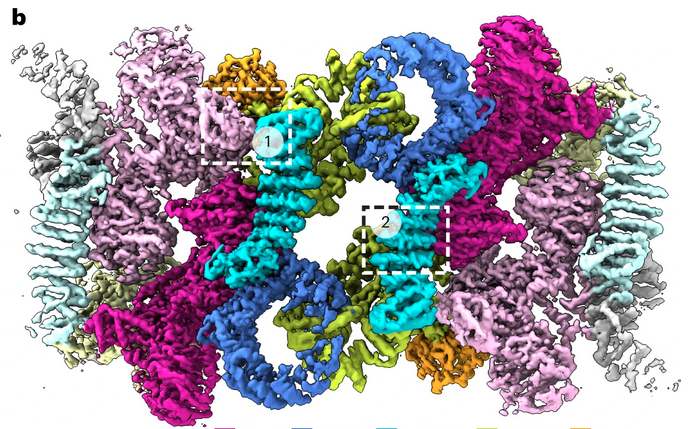High-resolution cryo-EM structure of TOROIDs reveal how glucose regulates TORC1 activity
Target of rapamycin complex 1 (TORC1) is a protein kinase controlling cell homeostasis and growth in response to nutrients and stresses. In Saccharomyces cerevisiae, glucose depletion triggers a redistribution of TORC1 from a dispersed localization over the vacuole surface into a large, inactive condensate called a TOROID (TORC1 organized in inhibited domains). However, the mechanisms governing this transition have been unclear.
Robbie Loewith’s group from the Department of Molecular and Cellular Biology has shown that acute depletion and repletion of Rag GTPase activity is sufficient to control TOROID distribution, independently of other nutrient-signaling pathways. The 3.9-Å-resolution structure of TORC1 from TOROID cryo-EM data together with genetic interrogation of key interactions in vivo provide structural insights into TORC1-TORC1′ and TORC1-Rag interaction interfaces. Their data support a model in which glucose-dependent activation of Rags triggers binding to TORC1 at an interface required for TOROID assembly, preventing TORC1 polymerization and promoting release of active TORC1.
The article was published in Nature Structural & Molecular Biology on January 23, 2023.

Cryo-EM reconstruction of TOROID via signal subtraction and SPA.
30 Jan 2023